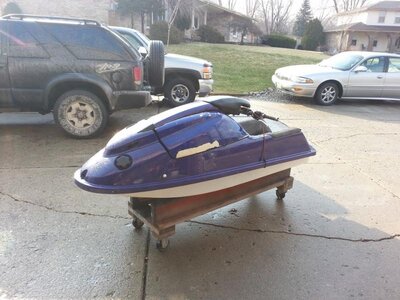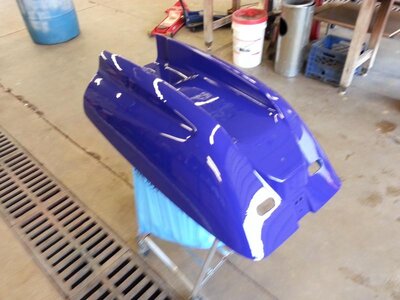I live in oregon and decided to wait till this winter to paint mine but i am near the famous "blowsion" and i talked to them and they did a write up email for me so here it is : ENJOY
Don't bother w/ any "marine" paint for refinishing your SJ. Those paint systems are designed for boats that spend the majority of their time floating in the water, not for nice custom skis that are ridden hard and fast and then stored in a garage.
Just treat your ski like you would if you are painting a car. I use the same automotive finishes here at Blowsion.
Go with a Basecoat/Clearcoat Automotive urethane paint system. You should be able to access or find everything you need at any of your local automotive refinishing supply stores.
I do everything with a mix of PPG and House of Kolor brand paints. These are not the cheapest as far as costs, but very durable and awesome color saturation. There is also DUPONT, Sherwin-Williams and many other quality brands available.
House of Kolor definitely has the “coolest” color spectrum, but is also more difficult to use and requires multiple layering to get some of the desired effects.
http://www.ppg.com/coatings/AutoOem/Pages/default.aspx
http://www.houseofkolor.com/
http://www2.dupont.com/Automotive/en_US/products_services/paintCoatings/paintCoatings.html
I would sand the topcoat of your ski with a pneumatic Dual Action Sander (or red scotch bright pad by hand) to around 220 grit, and then seal the sanded surface with PPG Epoxy White (DP48LF--mixes 2:1 ration with the DP402lf catalyst).
With the white base you can get the lighter colors to really show thru, rather than a gray or black primer base. For actual basecoat colors I use basecoat urethane paint colors (DBC or DBU black PPG Brand). With this DP48 base, and the PPG basecoat colors you should then follow with a good high solids clear coat. I like PPG DC3000. If you want to save some money go with PPG Omni urethane clear coat. It is a private label made by PPG and pretty good stuff. The key to the whole process is the PPG DP Epoxy sealer.
As long as you use this good quality primer you can cover it with a spray can paint or clear and still have a durable finish. The stuff is VERY strong and the key to a durable and lasting finish.
If you have a really rough surface that has been sanded with heavy grit or is scratched deeply, then you may need to use a ‘Filler Primer’ to smooth out the surface before applying the epoxy sealer. For this filler primer I use PPG’s K36 Primer with K201 catalyst.
Here is the link for more information:
https://buyat.ppg.com/refinishprodu...roductid=00a98467-8188-42bb-b339-01c52375e5c7
I would personally not recommend refinishing or painting the very bottom of your PWC. The more scratched it is the better it actually handles!
It seems like the more paint material you put on the bottom the more the new scratches that you invariably put in it will stand out and show up (more than before the new paint).
Hope this helps. Share some pics if you tackle your project and I can help out with any further Q?’s
Best Rgds,
John




